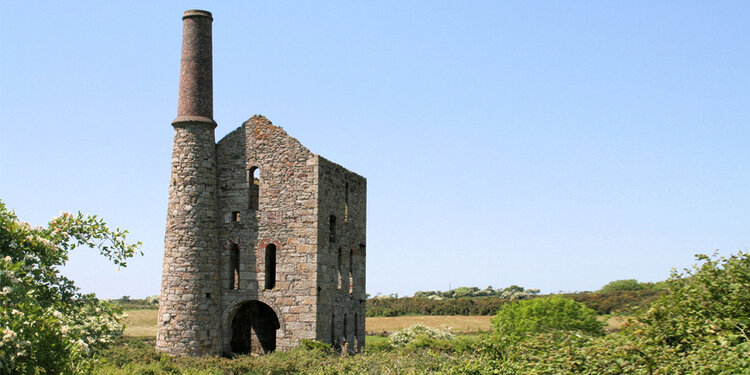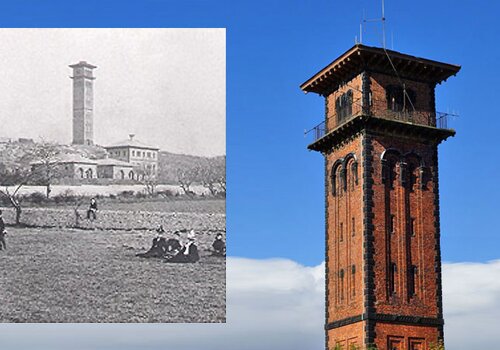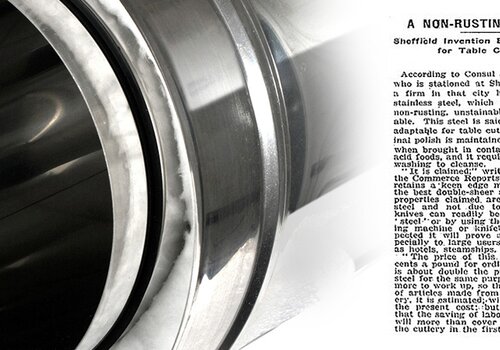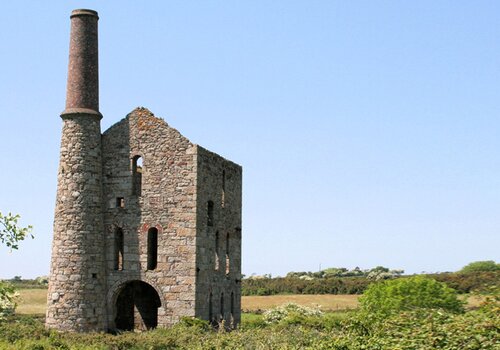(Washington, Tyne and Wear, 19. April 2017) We always have that perfect vision of people gathered round a roaring fire on a cold day, protected in a warm and cosy home.

This is a subconscious feeling from ancient times when the fireplace would be considered a gathering place, a place to eat and a place of survival without any of the amenities we take for granted today.
In early civilisations, namely Sumer, there were fire-places, fire-altars, and apparently chimneys as well, as referenced in the book: The Archaeology of the Cuneiform Inscriptions by Rev. A. H. Sayce. However other origins are lost in time, until the Romans pushed the technology of the chimney with under floor heating and venting, known as a hypocaust. This was a system where a furnace would heat rooms using clay or tile flues, and expelling smoke at the roof or on the side.
After the Roman Empire dissolved, the return to simple open fires lasted almost until the Norman Invasion in the 11th century, when two storey houses became the new innovation. The idea of a central fire was not efficient and the modern practice of having a fire next to the wall commenced as it does to this day.
Despite the use of chimneys becoming the norm, the origin and reference of any actual of chimneys remains reasonably invisible. One of the earliest references is an earthquake in Venice in 1347, which mentions the destruction of many chimneys in the catastrophe.
Chimneys, despite the basic design, were always being improved as new inventions were thought up to make them more efficient. Louis Savot, in Paris in the 16th century, made improvements, such as requiring a smoother flue and a narrower fireplace. Chimney safety was also becoming more prominent. In England, by 1719, all clay built chimneys in England were ordered rebuilt of brick
Benjamin Franklin invented the “Pennsylvanian Fire Place” in 1741, with his Franklin stove, which drastically reduced the amount of smoke and generated more heat than previous designs. Franklin didn’t patent the design. He stated “that as we enjoy great advantages from the inventions of others, we should be glad of an opportunity to serve others by any invention of ours, and this we should do freely and generously.”
One of those who took the opportunity was Sir Benjamin Thompson. Improving on the Franklin design, the “Rumford Fireplace” modified the dimensions of the large fireplace and changed it to a design used to this day, which is more shallow and reflects heat back into the room. The benefits of this design meant that a smaller, narrower chimney could be constructed, in comparison to the larger expensive brick structures up until that point. The “Rumford stove” also reduced the heat and the smoke problems, which was a major issue for kitchens up until then.
Chimneys within houses are still here, despite the post-war modernisation boom and reliance on central heating. Previously bricked up chimneys and fireplaces are now being liberated with modern steel, ceramic or volcanic pumice liners, super efficient fireplaces and multi fuel stoves with renewable fuel supplies such as wood, biomass, as well as getting more efficiency out of gas and coal. Huge constructs still need the basic chimney flue the same way the Romans did and the Victorian industrials did, but now with energy efficiency and the environment in mind….
….subconsciously humans will always feel the comfort of a roaring fire the same way their ancestors would have in the distant past.

News
Looking at local landmarks near our Washington factory, an interesting one has popped up (excuse the pun) at Cleadon, a village located near...

News
Harry Brearley is commonly regarded as the inventor of “Stainless Steel” in Sheffield, however, his path was laid by a number of scientists ...

News
We always have that perfect vision of people gathered round a roaring fire on a cold day, protected in a warm and cosy home.